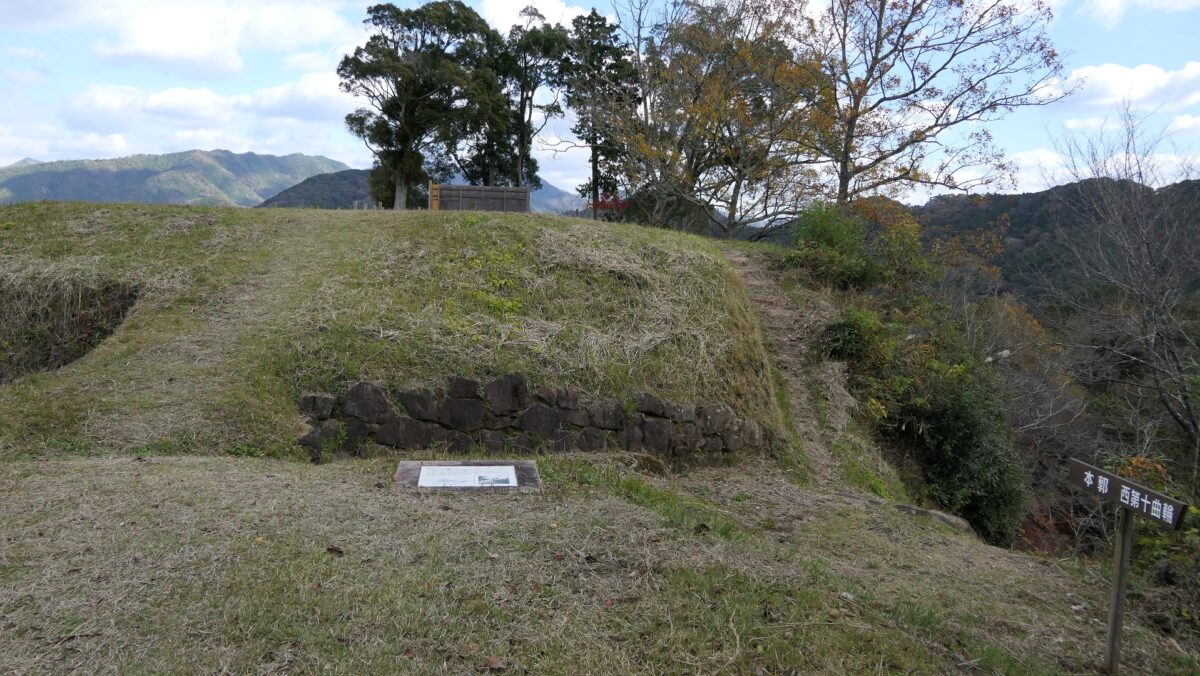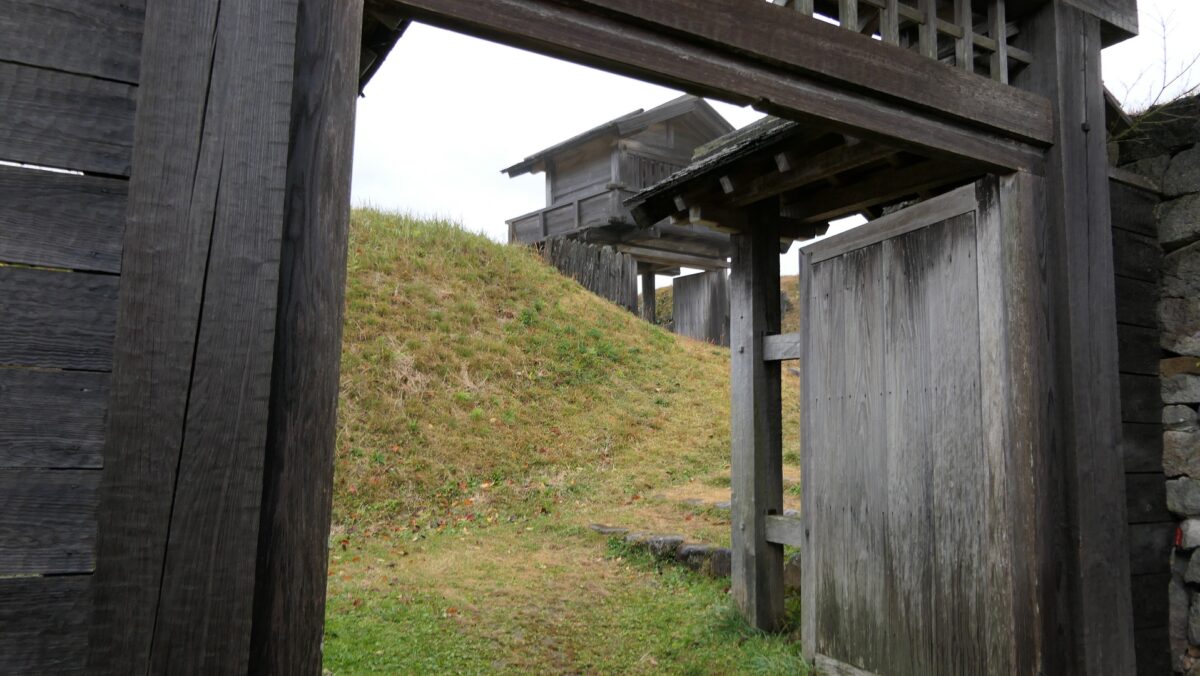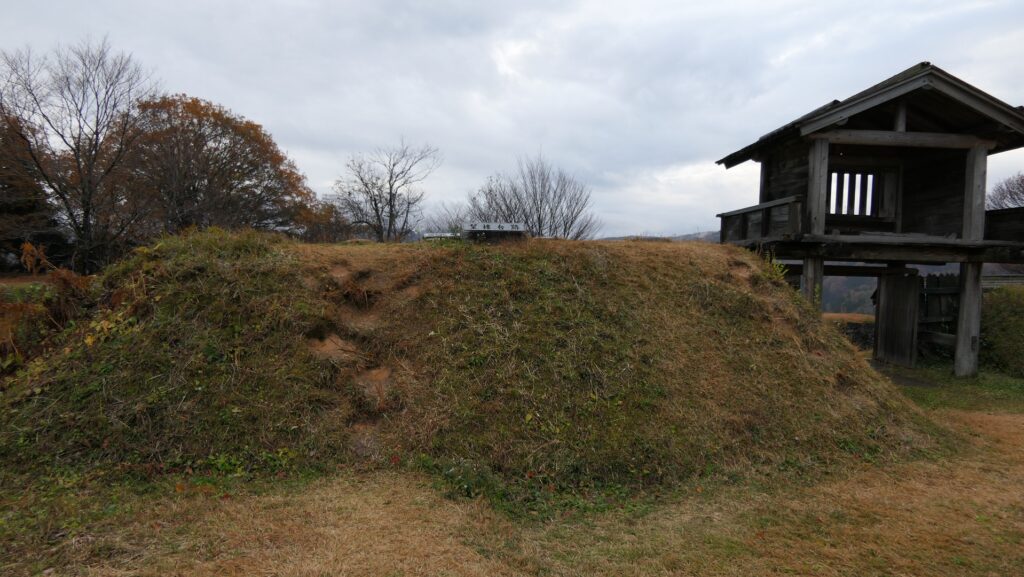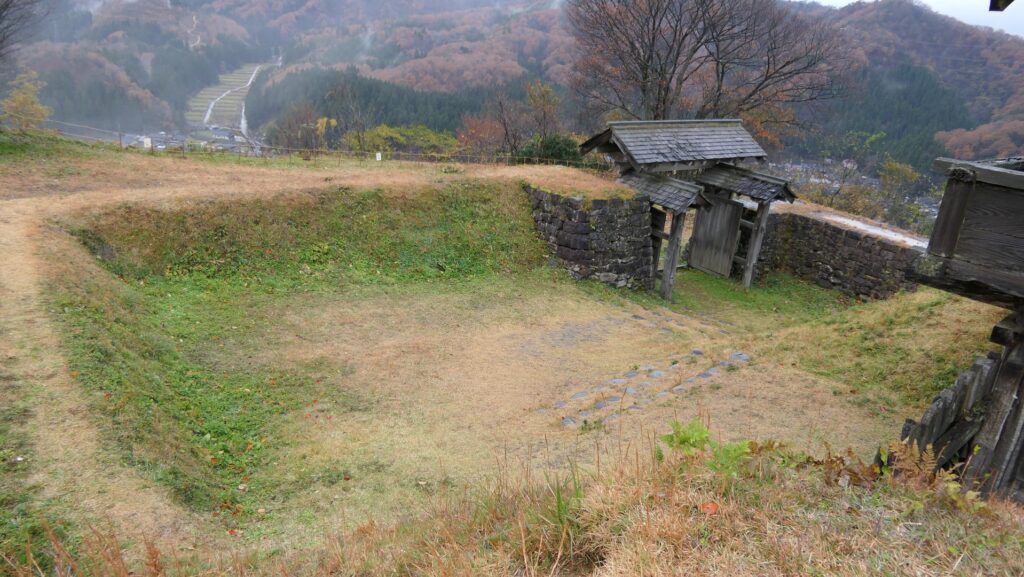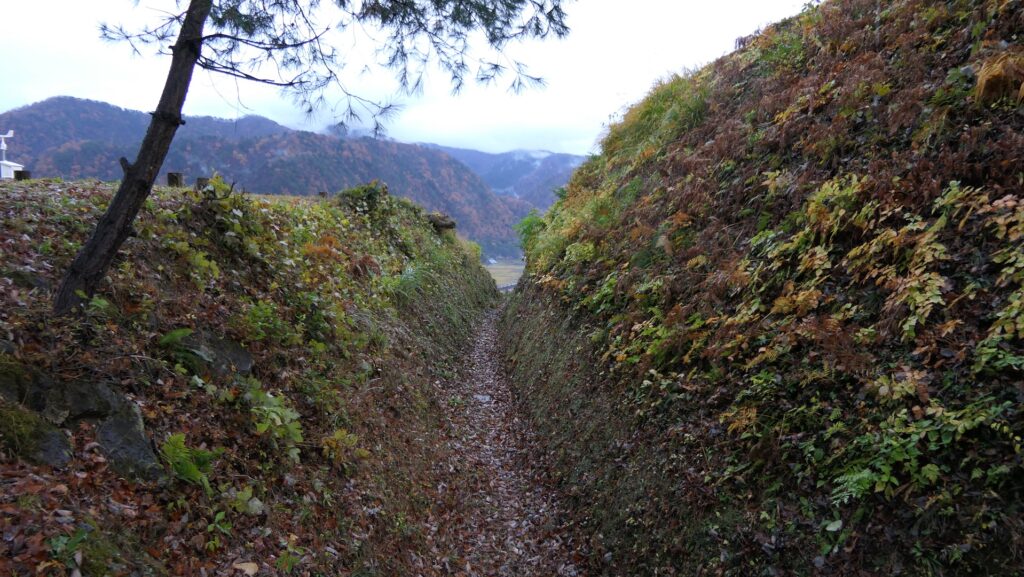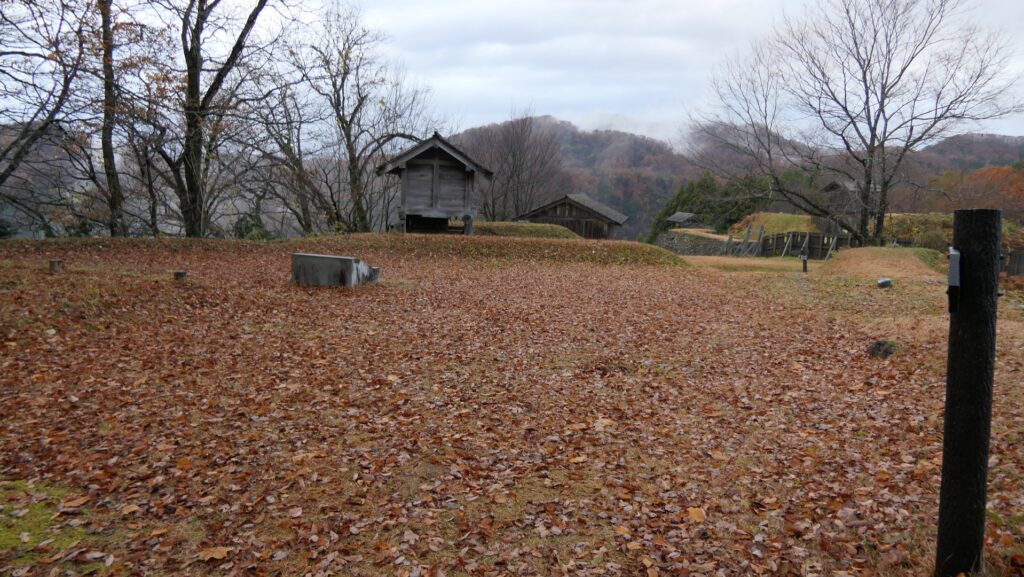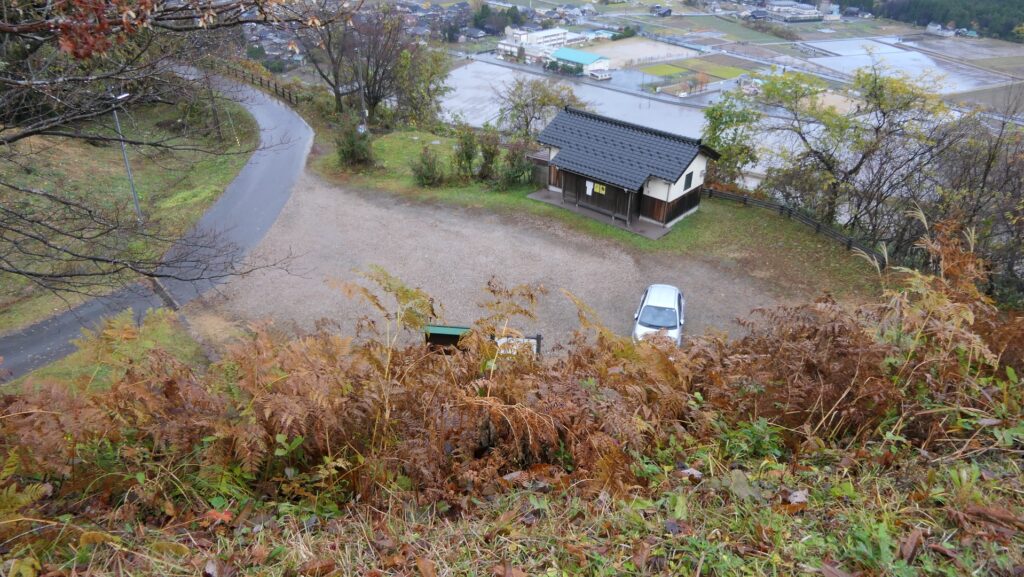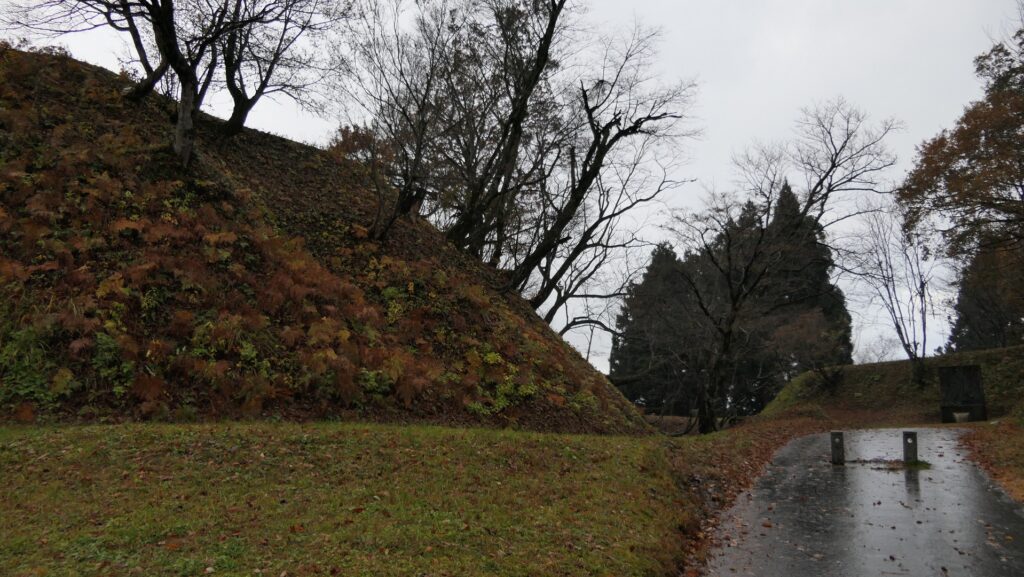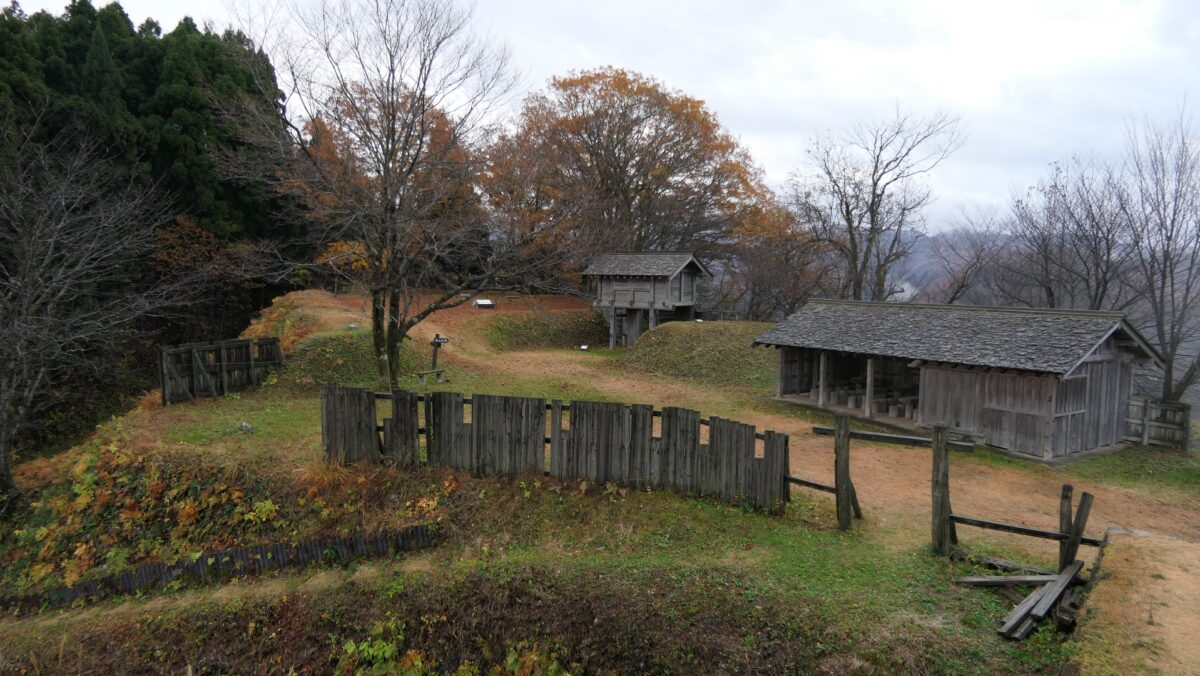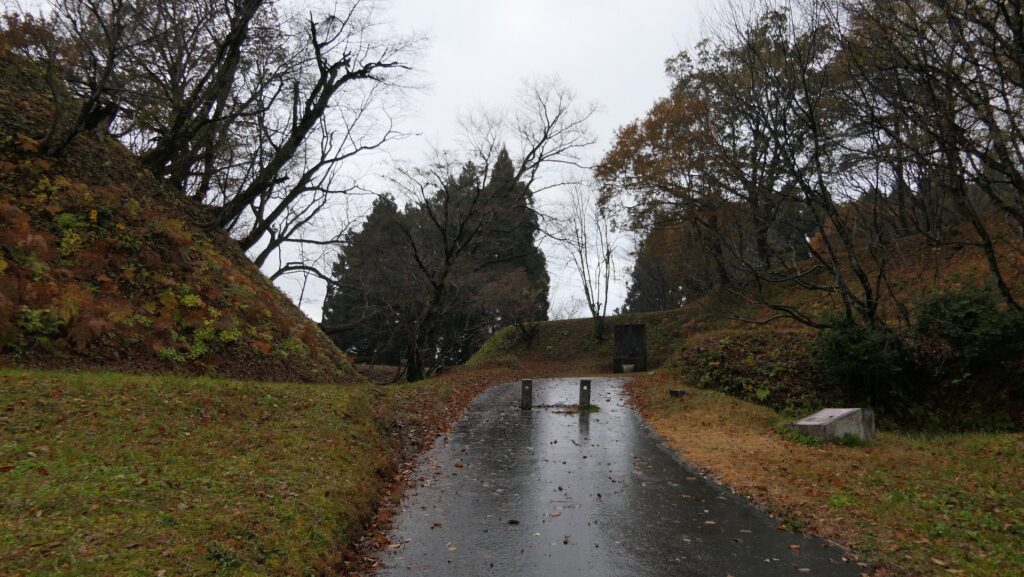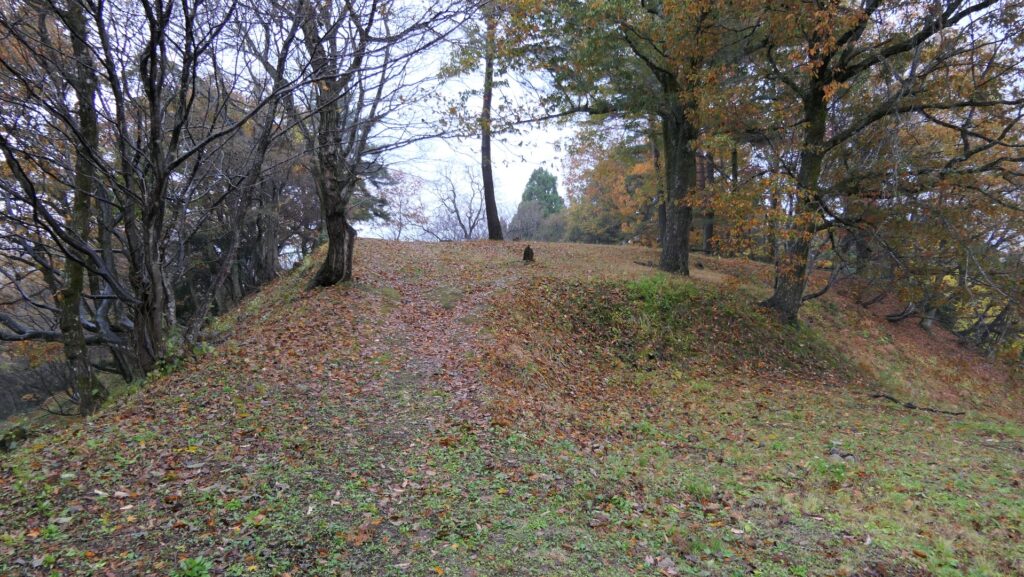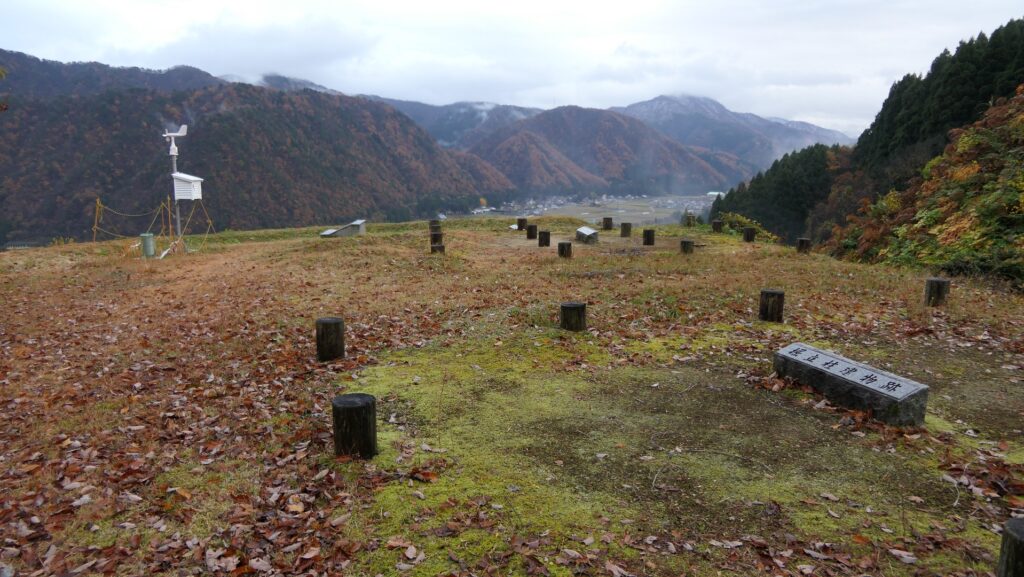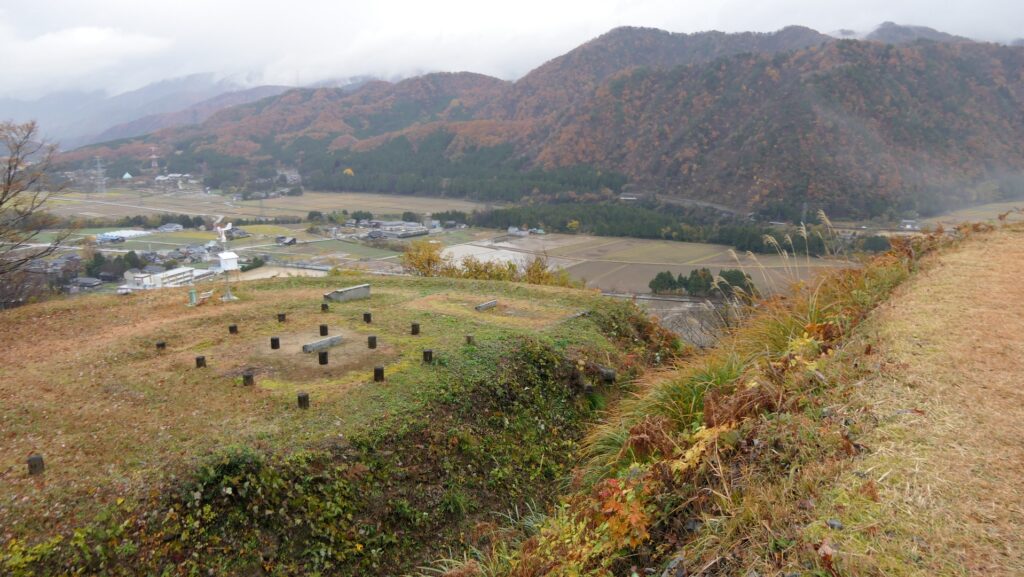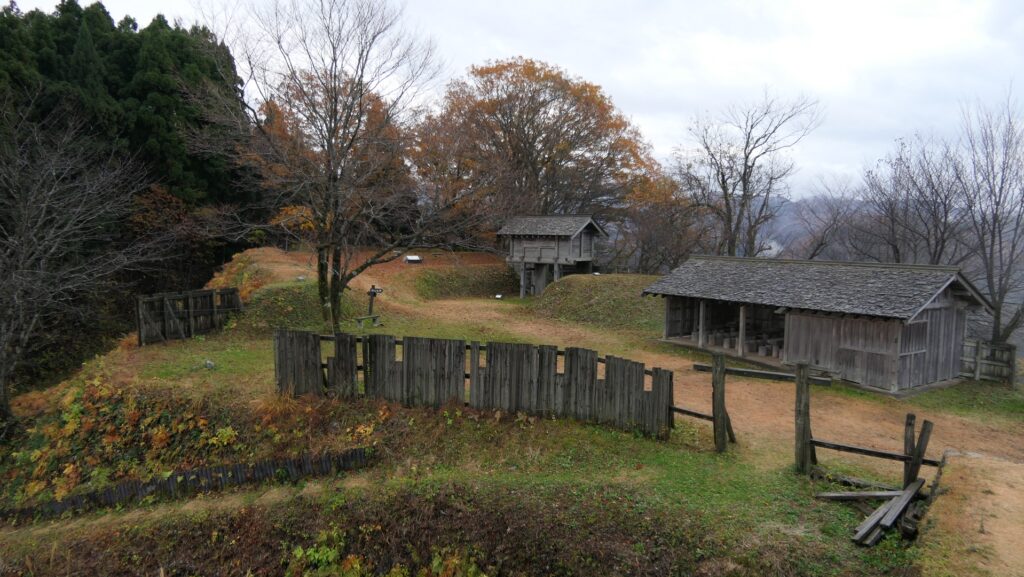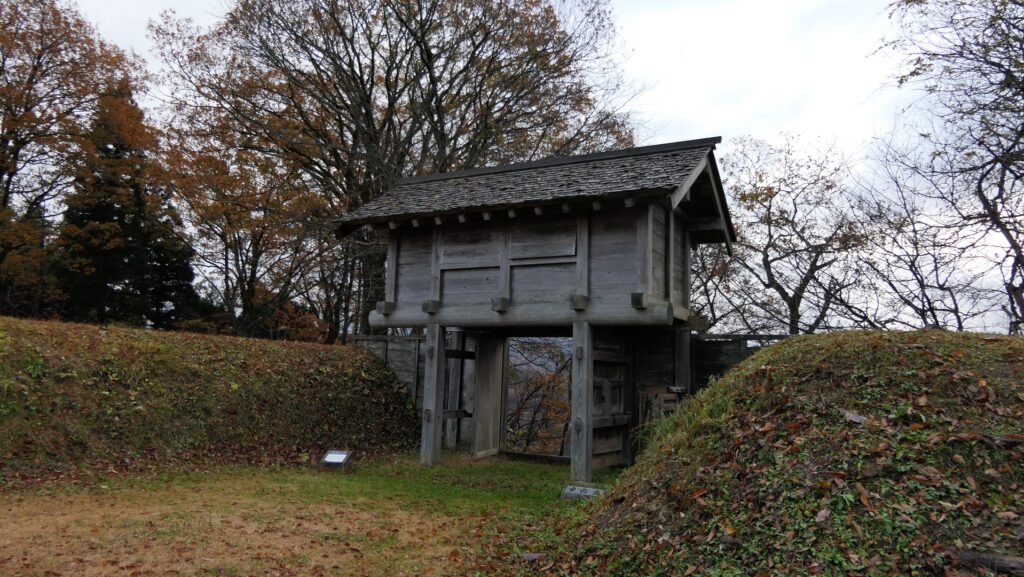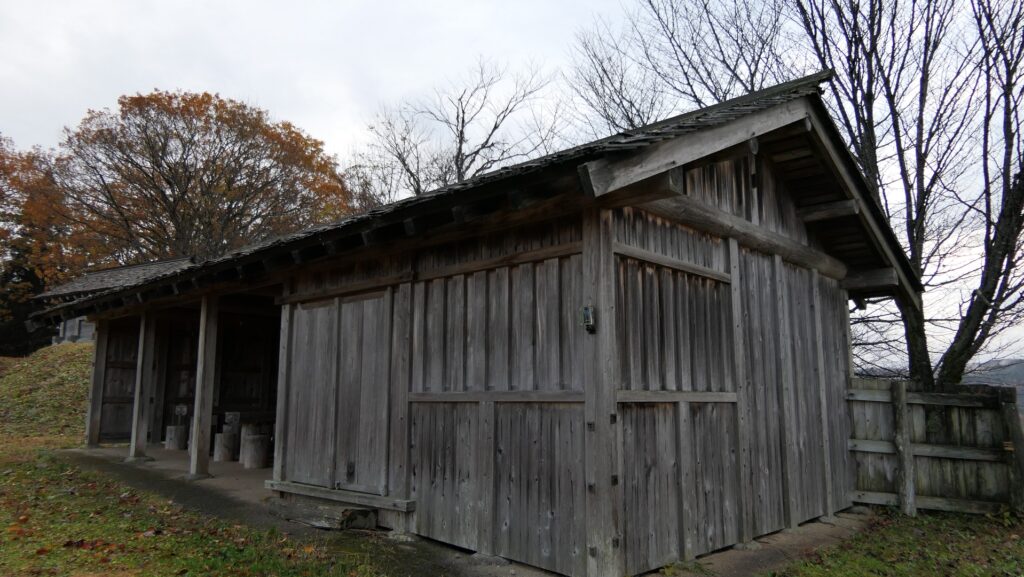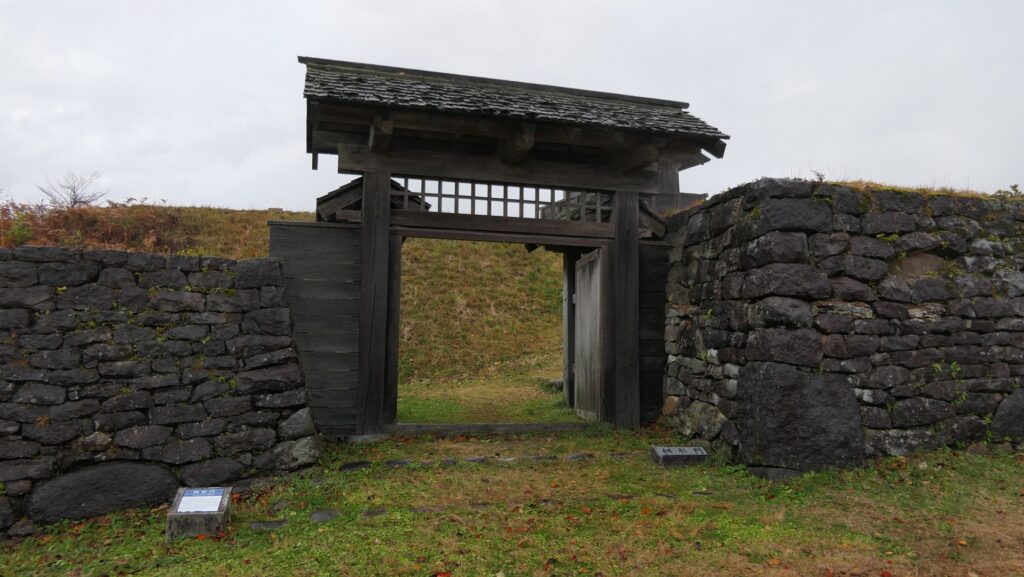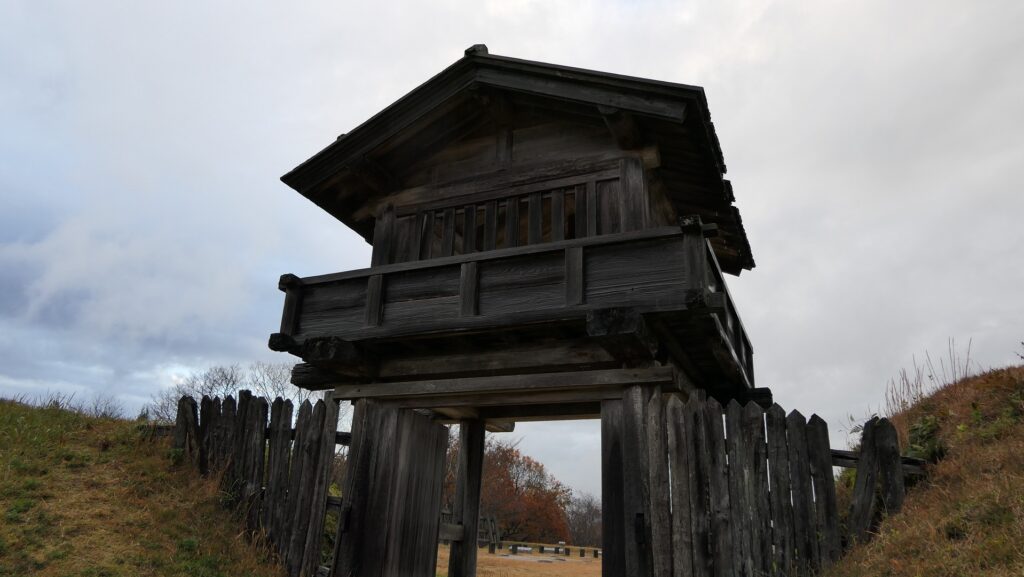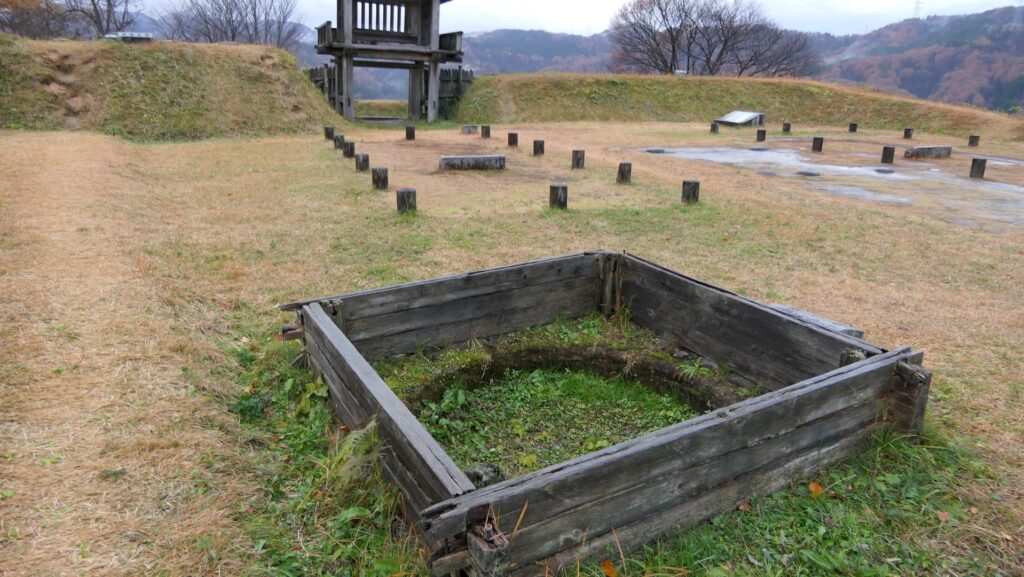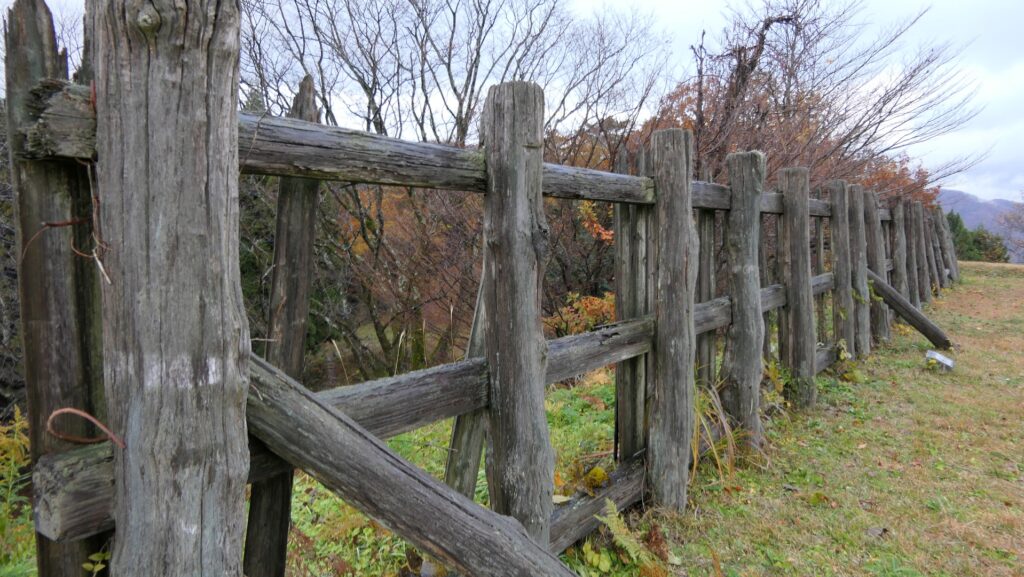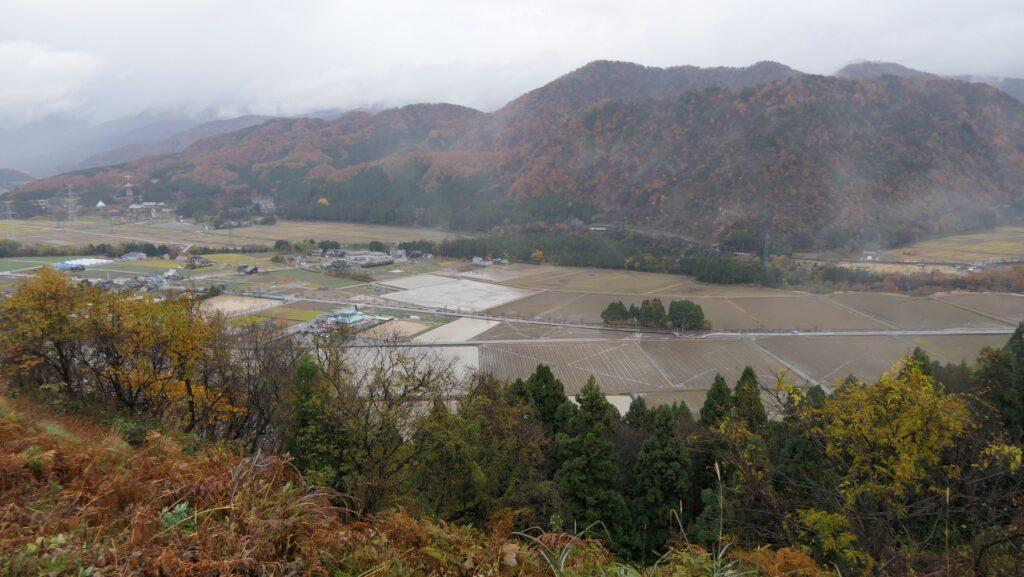Location and History
Area of Border Dispute
The ruins of Kagomori Castle are now located in Matsuno Town in Ehime Prefecture, near the Kochi border. Similarly, the castle was located in Iyo Province which was near the border of Iyo Province and Tosa Province in the past. This location was often tense because it was important to the lords of both provinces in order to maintain their territories.
The range of Iyo Province and the location of Kagomori CastleIt is often said The Watanabe Clan owned the castle since the 12th Century. The clan eventually followed the Saionji Clan which governed the southern Iyo Province, and became one of the fifteen commanders of Saionji. Kanesada Ichijo, the lord of Tosa Province in the first 16th Century, sent one of his relatives, to the Watanabe Clan to become their adopted heir. In fact, this was his preparation for the invasion of Iyo Province. The adopted Noritada Watanabe did nothing for his master, Kinhiro Saionji when Kanesada actually invaded the Iyo Province in 1567. Kinhiro got angry and decided to attack Noritada in Kagomori Castle before Noritada could surrender. This event happened at the castle near the border.
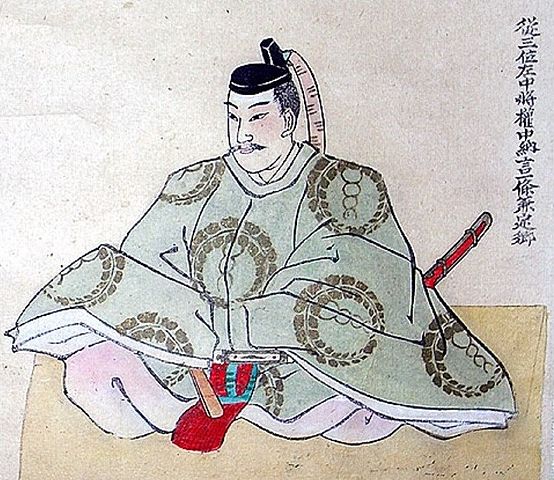
Castle is built on U shape Ridge
Kagomori Castle was built on a mountain where the ridge looked like the letter U. A lot of its enclosures were in a line on the long and narrow ridge. The Main Enclosure was on the center of the U shape, in the northernmost section. Nine enclosures were from the western edge of the U shape which was the next to the Main Enclosure. Another three enclosures were east of the Main Enclosure. In addition, the two Kojo Enclosures and the Sinjo Enclosure were in the eastern edge of the U shape. There were 16 enclosures in total, though each of them was small. They were basically made of soil, divided by artificial ditches, and the slope of the mountain which was intentionally cut vertically. Moreover, the mountain was surrounded by rivers in three directions except for the south. Overall, the castle can be seen as a stronghold using natural terrain.
The relief map around the castleDuring the unification of Japan by Hideyoshi Toyotomi in the 1580s, his retainer, Katsutaka Toda became the lord of the southern Iyo Province which included Kagomori Castle. Katsutaka became the leader, and then, Takatora Todo became the next leader in 1595 after Katsutaka died. Kagomori Castle continued to be an important castle near the border of Tosa Province even during the unification of Japan. This is because the governance of Japan was still unstable. The lord of Iyo Province needed to keep monitoring the movements of the Chosogabe and Yamanouchi Clans.

Castle is improved during Unification of Japan
Kagomori Castle had basically been a simple mountain castle, but was eventually improved with the latest technology from Katsutaka or Takatora. For example, stone walls were built around the Main Enclosure. The enclosure originally had the Main Hall for the lord, and a building like the Main Tower was added. The excavation team managed to find large sized rooftiles including grampuses at the site, which could have been used for the Main Tower. According to Takatora’s biography, the Main Tower of Kagomori Castle was moved to his home base, Uwajima Castle and used as a turret. However, this is still not entirely proven, but Kagomori Castle might have looked like a modern castle.
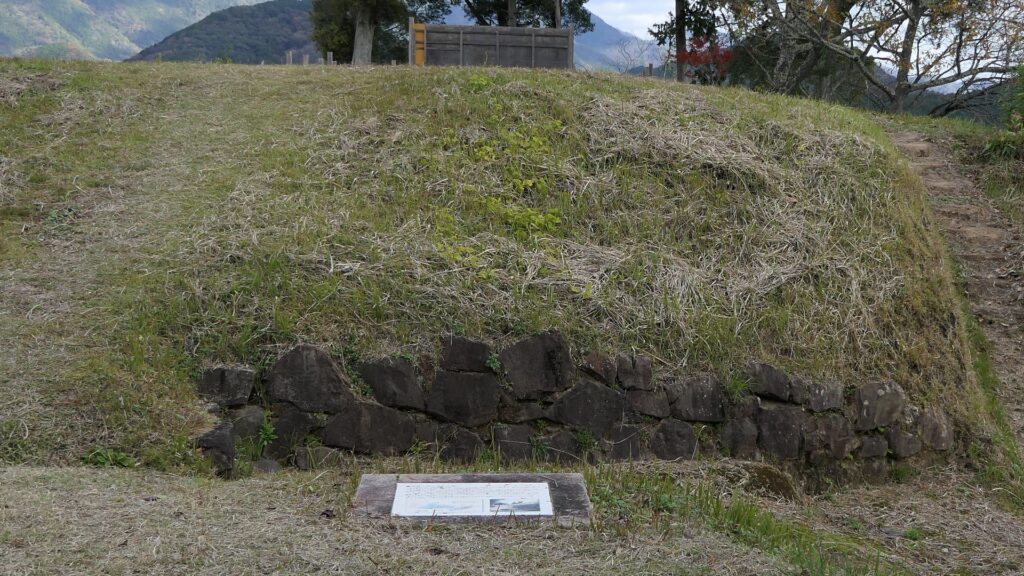
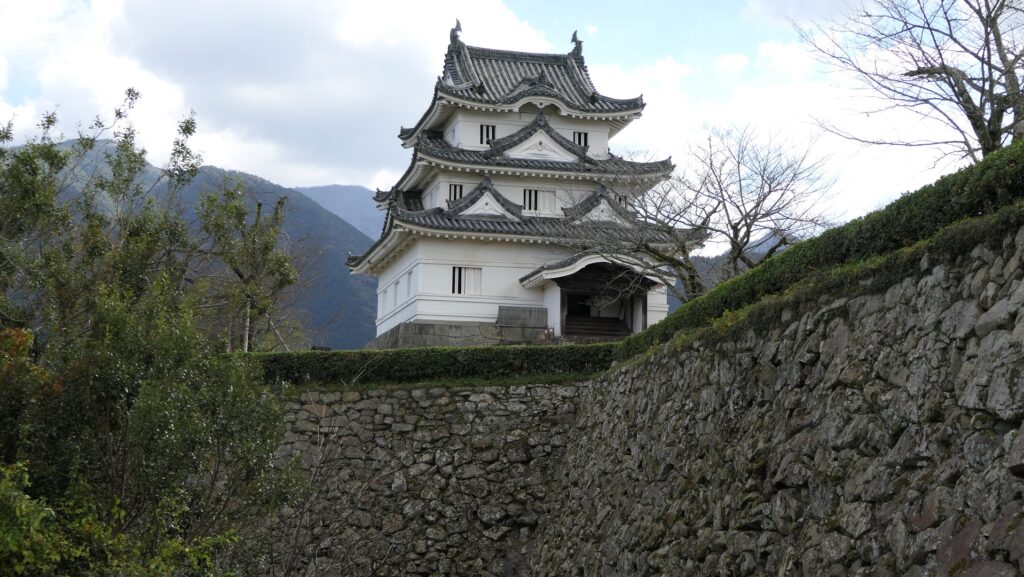
In 1615, Ieyasu Tokugawa, who was the founder of the Tokugawa Shogunate, defeated the Toyotomi Clan in Osaka Castle. After that, the authority of the shogunate was established. The shogunate ordered all of the lords in Japan to follow one castle rule, the Law of One Castle per Province to make its government more stable. Because of the new law, Kagomori Castle, which was owned by the Date Clan after Takatora was moved to another province, was eventually abandoned.


